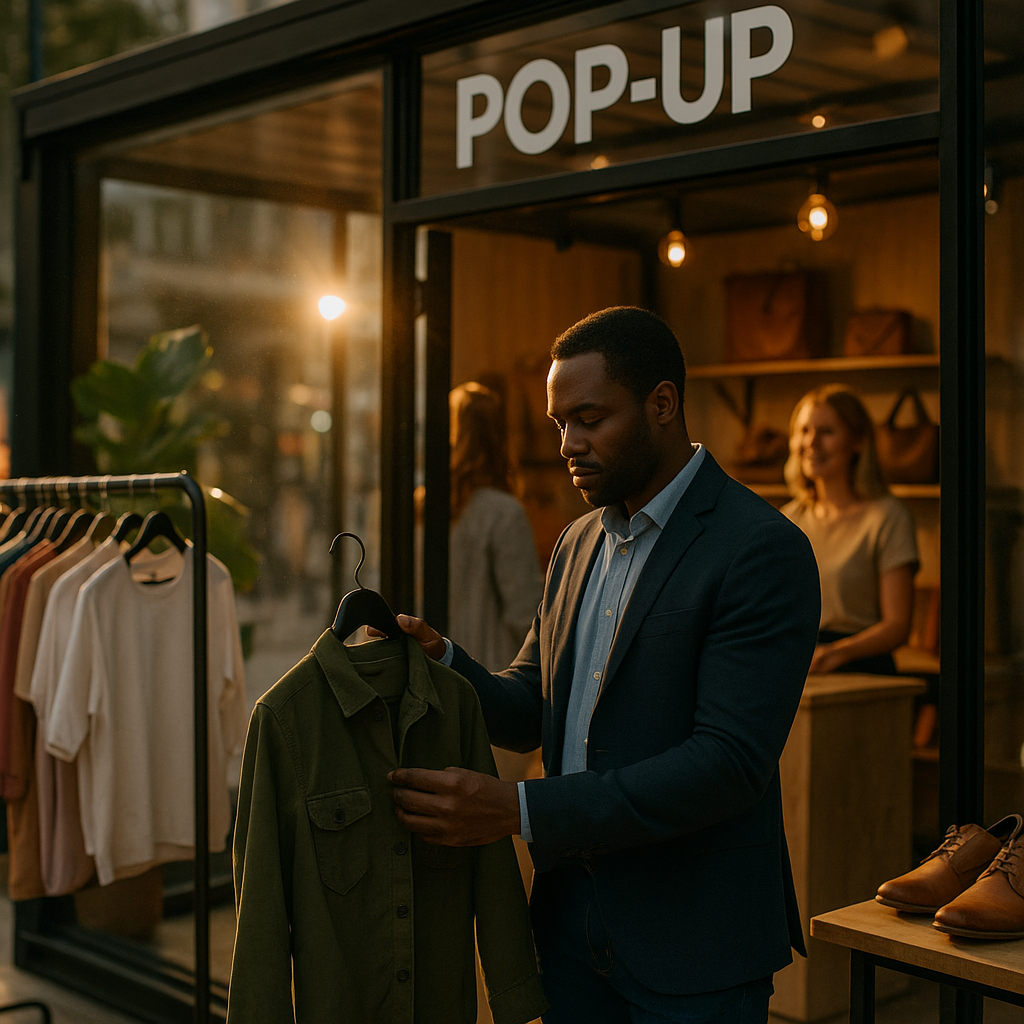Testing new retail concepts can be risky, but a well-executed pop-up shop can become a game-changer for brands. This case study of a successful pop-up shop demonstrates how innovation meets consumer demand in today’s retail landscape. Discover unique strategies that helped redefine customer experience and learn how to apply these insights to your own retail aspirations.
The Power of Pop-Up Shops in Modern Retail
Pop-up shops have evolved into strategic tools for brands seeking to test new products, concepts, or markets before investing heavily. According to a 2024 report by Retail Dive, over 70% of legacy and direct-to-consumer brands used pop-up stores to validate ideas and gather real-time customer feedback. Unlike traditional stores, pop-ups offer flexibility, cost efficiency, and marketing buzz.
Brands leverage the exclusivity and temporary nature of pop-ups to create excitement. They provide a low-risk environment to test store layout, product mix, and customer service models. For many, these shops serve as live laboratories, allowing for agile adjustments based on daily data and customer input.
Concept Overview: Testing an Experiential Retail Model
The focus of this case study is Lumin, a direct-to-consumer skincare brand that piloted an experiential retail model via a pop-up in downtown Los Angeles. Lumin’s goal was to craft a space blending product education with personalized routines, support from skincare professionals, and an immersive trial experience. This pop-up aimed to answer the question: can a hands-on, concierge-style retail model drive higher conversion and brand loyalty?
Key objectives included:
- Gaining qualitative insights on customer preferences and objections
- Quantifying conversion rates compared to e-commerce and traditional retail
- Testing interest in new product lines and bundled offerings
- Building a community through live workshops and micro-events
Location, Design, and Customer Journey Insights
Location is a secondary keyword that heavily influences a pop-up’s success. Lumin selected an area with high foot traffic, targeting urban professionals and trend-conscious consumers. The design featured modular fixtures, natural lighting, and versatile areas for consultations, product trials, and educational sessions.
From entry, customers were welcomed by brand ambassadors and steered into an interactive skin assessment. Personalized consultations, facilitated by trained staff, used digital tools to recommend routines tailored to each guest. This personalized approach contributed to longer dwell times and higher ticket averages, as shoppers felt their unique needs were addressed in real time.
Feedback stations encouraged visitors to share their experience, which Lumin rapidly integrated into daily operations. QR codes allowed shoppers to seamlessly buy products online if inventory ran out in-store—a direct answer to bridging offline and digital retail.
Sales Performance and Metrics from the Pop-Up Experiment
Data-driven decisions are crucial in evaluating new retail concepts. Over its six-week run, the Lumin pop-up exceeded expectations with:
- 40% higher conversion rate compared to Lumin’s best online campaigns
- Strong demand for bundled products, which made up 55% of sales
- Repeat visits from over 1,200 customers due to effective loyalty-building experiences
- Combined in-store and online sales growth of 28% month-over-month
Net Promoter Scores (NPS) collected post-visit averaged an impressive 84, signaling high loyalty intent. The pop-up also served as a content engine, generating user-generated stories and testimonials later featured across Lumin’s social media channels and digital ads. This multi-channel momentum reinforced the brand’s credibility and deepened trust.
Lessons Learned: Customer Experience and Retail Innovation
Several key takeaways emerged from this successful pop-up shop study, shaping best practices for future retail experiments:
- Invest in Staff Training: Engaged, knowledgeable teams made brand values tangible during each interaction.
- Design for Flexibility: Adaptable infrastructure allowed for quick pivots in response to shopper feedback.
- Seamless Omnichannel Integration: Linking in-store and online experiences maximized sales opportunities and improved overall customer journey satisfaction.
- Leverage Data Responsibly: Real-time feedback and analytics driven by privacy-centric technology enabled immediate, customer-first changes without overcomplicating the checkout process.
Most importantly, the pop-up affirmed that physical retail—when infused with meaningful personalization—can outperform digital channels in terms of conversion and loyalty.
Scalability and Brand Growth After the Pop-Up
The secondary keyword scalability is critical after a pilot. Following the pop-up, Lumin used the success data to justify expanding its concept to three additional cities in 2025, tailoring each location to local trends learned from the first trial. The insights fueled smarter inventory planning, improved customer acquisition strategies, and more targeted influencer partnerships. Most notably, Lumin’s return on investment from the pop-up provided compelling evidence for stakeholders wary of retail’s fixed costs.
This case demonstrates that well-planned pop-up shops are not just temporary marketing tactics—they are test beds for transformative retail concepts and significant brand growth.
FAQs About Successful Pop-Up Shops and Retail Experiments
- What is the main benefit of testing a new retail concept with a pop-up shop?
Pop-ups allow brands to gather valuable customer insights, validate ideas, and optimize the shopping experience without the long-term risks or expenses of permanent locations.
- How do you measure pop-up shop success?
Analyze sales conversions, foot traffic, customer feedback, repeat visits, and social media engagement. Compare these metrics against established benchmarks, such as online sales or previous events.
- How long should a pop-up shop run to collect meaningful data?
A duration of four to eight weeks is typical, providing enough time to see clear patterns in customer behavior and sales, while maintaining the project’s sense of urgency and novelty.
- Is a pop-up shop suitable for both small businesses and established brands?
Yes. Pop-ups are an effective and accessible strategy for any brand seeking to introduce a new concept, test-market products, or build community engagement quickly and affordably.
- Can pop-up shop insights improve online retail?
Absolutely. Insights from in-person pop-ups often lead to enhanced website UX, refined messaging, and stronger digital loyalty programs, driving overall brand success.
In summary, this case study proves that a thoughtfully executed pop-up shop can unlock powerful brand insights, drive conversions, and set the stage for scalable retail concepts. Smart brands experimenting with experiential retail are better positioned to lead and grow in 2025’s evolving market.
